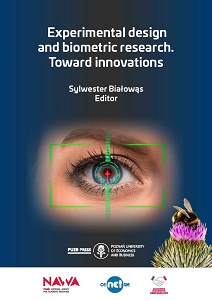Research on electrodermal activity
Research on electrodermal activity
Author(s): Bartłomiej Pierański, Jakub Berčík
Subject(s): Economy, Methodology and research technology, Marketing / Advertising
Published by: Wydawnictwo Uniwersytetu Ekonomicznego w Poznaniu
Keywords: scientific methods;electrodermal activity;research;measurment tools;
Summary/Abstract: In this chapter, a method of physiological measurements—that is detection of electrodermal activity based on the sectonic activity of eccrine sweat glands—is discussed. It is believed that the excretion of sweat, which is regulated by the nervous system acting independently of human will, is an indicator of a person’s emotional arousal as a result of specific stimuli. Hence, the electrodermal reaction can be used in diagnosing emotional arousal caused by, e.g. specific products, advertisements or elements of the in-store space. Electrical activity of the skin is caused by two types of stimuli: sustained and one-off. Sustained stimuli have a continuous effect on the body over a relatively long period of time. On the other hand, one-off stimuli have a relatively strong and very short-lasting effect. This type is defined as novel, unexpected, significant or aversive. Electrodermal activity is measured on the skin surface (Strelau, 2006). Generally speaking, the measurement of electrodermal activity is one of the biometric measurements. Biometrics is a universal term that represents measurements of the body’s physiological responses—not directly of the brain—to external stimuli that are felt through the senses (Pradeep,2010; Berčík & Rybanská, 2017). The electrodermal method allows to measure either electrical resistance or its inverse, i.e. the electrical conductivity of the skin. These measurements are carried out while a small current flows through the skin from an external source. Electrodermal activity measurement is performed with the use of special electrodes, electrode gels and recording devices. The available equipment for the analysis of electordermal activity is characterised by relatively low cost (compared to other devices for physiological measurements) of purchase and operation. Moreover, the electrodermal activity measurement is non-invasive andcarries no risk to the health or life of the test subjects.
Book: Experimental design and biometric research. Toward innovations
- Page Range: 61-88
- Page Count: 28
- Publication Year: 2021
- Language: English
- Content File-PDF

